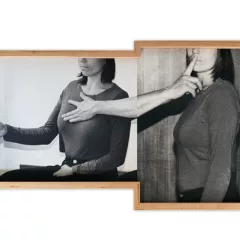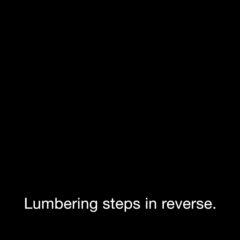This week’s Weekly has my review of ICA’s Puppet Show. Below is the copy with some pictures. More pix at flickr.
Puppet Love
The ICA’s marionette show is hard-hitting fun.
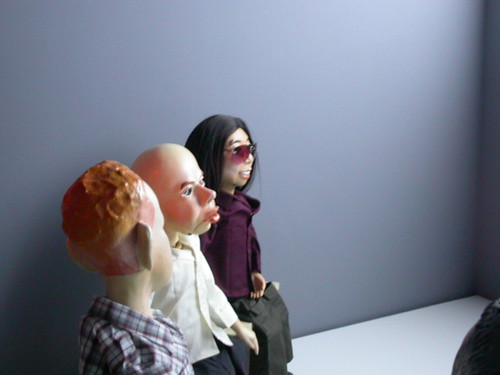
Puppet artists–Rirkrit Tirivanija and Philippe Parreno sit on a bench watching a video of themselves at the ICA’s Puppet Show.
Artists enjoy being in control. They’re puppeteers. And as you can see in the Institute of Contemporary Art’s “The Puppet Show”—actual puppetry is popular with some of today’s leading artists.
This encyclopedic roundup of puppet art has everything from displays of vintage puppets to puppet- like sculptures, videos and clay animations. Like Punch and Judy, “The Puppet Show” both entertains and taps into important topics like love, hate, violence, sex, identity and humor.
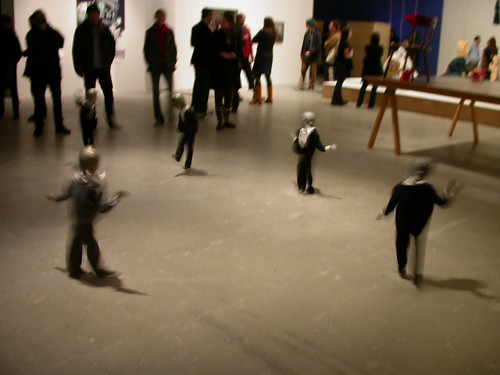
Dennis Oppenheim’s marionettes dancing at the Puppet Show opening.
Some of the best works raise issues about the artist as performer-for-hire in a world where someone else calls the shots. Dennis Oppenheim, Maurizio Cattelan, Pierre Huyghe, Paul McCarthy, Rirkrit Tiravanija and Philippe Parreno—all big international artists—have made works in this vein. These commercially successful artists operate at very high levels in the art world. Their self-puppetry smacks (just a little) of self-mockery, but the idea raised—the artist as puppet—is something young artists should be thinking about.
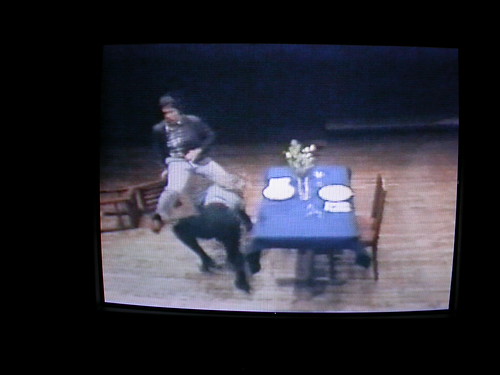
Bruce Nauman’s Violent Incident (Man/Woman Segment) 1986. video, 30 minutes. The man and woman switch roles an attack each other in a series that repeats in a 30-minute loop.
Oppenheim’s Theme for a Major Hit—a group of writhing, motor-driven self-portrait marionettes—is captivating, as is Maurizio Cattelan’s lifelike miniature sculpture of artist John Armleder. And both Oppenheim and Cattelan create an aw-shucks cuteness with mini-me figures who are either jiggling to an unheard tune (Oppenheim) or climbing like Spider-Man up a glass wall.
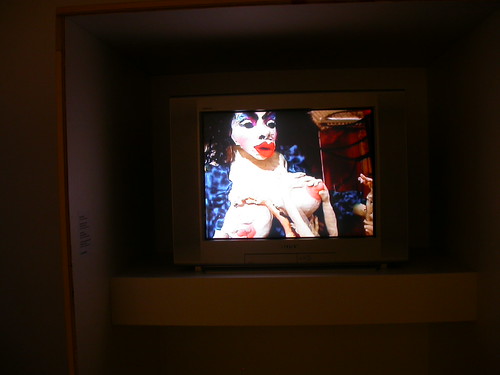
Natalie Djurberg’s video Feed All the Hungry Little Children, 2007. animation, 6:33 minutes. shown on a monitor in a puppet-theatre-like box. This piece is outstanding and perhaps the biggest surprise in the show, with its transgressive imagery in old fashioned clay animation.
Rirkrit Tiravanija and Philippe Parreno have created lap-sized self-portrait dummies that sit on a ventriloquist’s lap. This image is projected on the wall. On a small bench in front of the projection are the two little lap puppets and their friends watching the show.
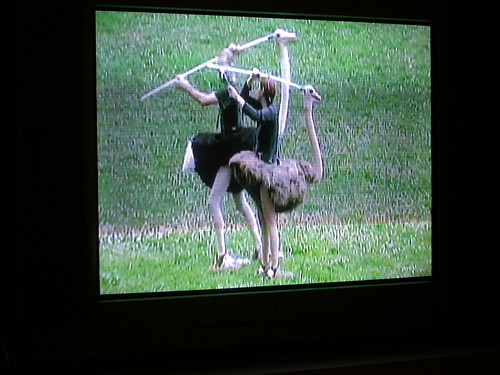
Guy Ben-Ner, Elia: A Story of an Ostrich Chick, 2003. video, 22:30 minutes. Another outstanding work in the show. We had seen this piece a while back at Vox Populi in the video lounge and loved it.
I love all these works, but their scale subverts their power to talk big. Were they larger than life— gigantic even—these pieces would catapult the discussion into the realm of the artist as Frankenstein, and the world of art as an out-of-control laboratory. That’s where the discussion belongs today, with the monster markets, monster fairs, monster artists and monster collectors spending monster dollars.
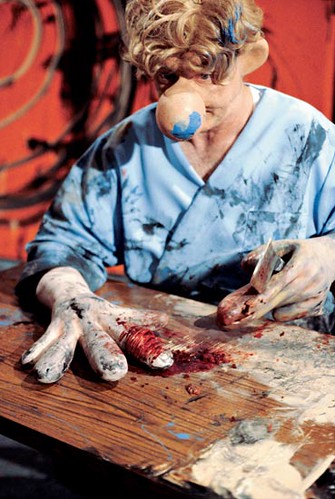
Paul McCarthy’s video Painter gets it about right. The eponymous Painter is a barely coherent artist in a hospital gown with a baseball-sized nose and giant hands. He paints with mayonnaise and ketchup while babbling epithets, and when he meets his gallerist he shouts: “I know you owe me money. Why don’t you pay me the money you owe me?” and she hits him. In one scene he hacks away at his own fingers. Macabre and fully loaded with anger, the piece pokes at both the genius myth and the commercial art world, and is more relevant today than when it was made in 1995.
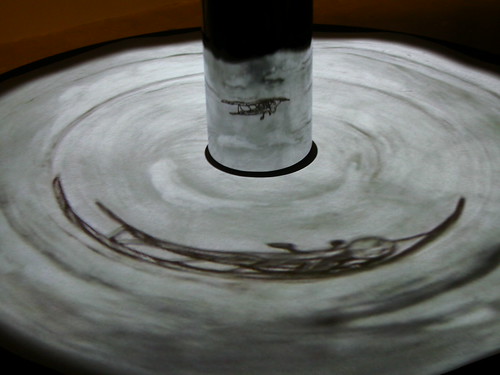
William Kentridge’s spinning What Will Come, 2007. anamorphic film reflected in cylinder. 35mm film transferred to DVD. 8:40 minutes, is not a puppet show in any way. But it does use animation to create a story. Kentridge’s collaboration with the South African puppet company on a piece about the Truth and Reconciliation Committee (also in the show), is an outstanding piece of political theatre using puppetry.
There’s global and gender politics in the 29-artist exhibit as well. Kara Walker, William Kentridge, Nathalie Djurberg and Bruce Nauman raise issues about race, gender and social policy in virtuoso works.
The show’s installation by artist Terence Gower showcases many of the videos in little puppet theaters. It’s perfect. This is a wonderful exhibit that will travel to four other locations after Philly, carrying its discussion of identity and string-pulling wherever it’s seen.
“The Puppet Show”
Through March 30. Institute of Contemporary Art, 118 S. 36th St. 215.898.7108.



